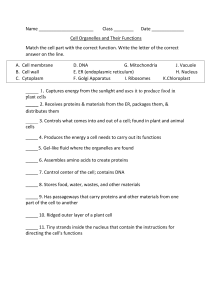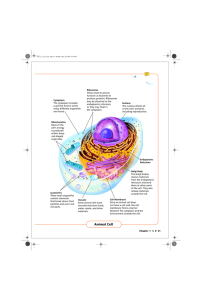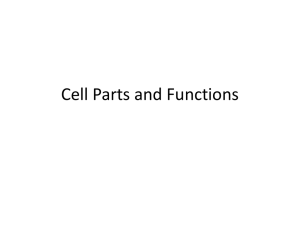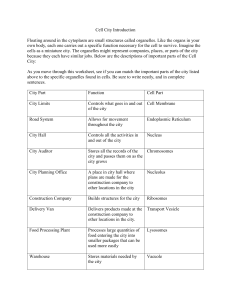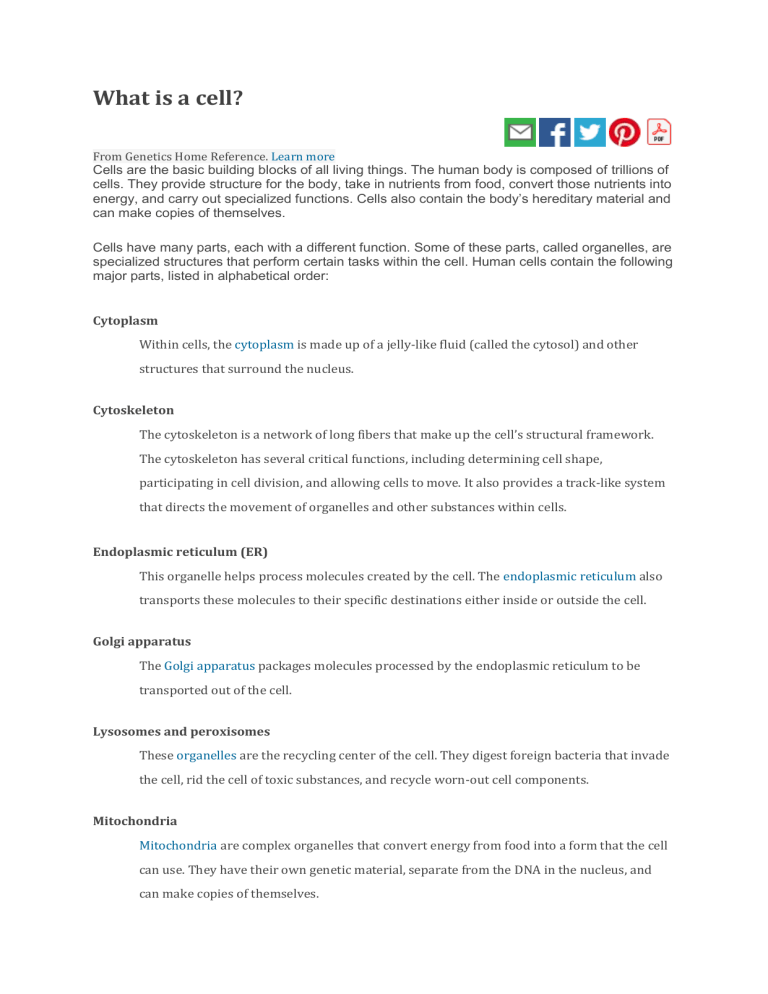
What is a cell? From Genetics Home Reference. Learn more Cells are the basic building blocks of all living things. The human body is composed of trillions of cells. They provide structure for the body, take in nutrients from food, convert those nutrients into energy, and carry out specialized functions. Cells also contain the body’s hereditary material and can make copies of themselves. Cells have many parts, each with a different function. Some of these parts, called organelles, are specialized structures that perform certain tasks within the cell. Human cells contain the following major parts, listed in alphabetical order: Cytoplasm Within cells, the cytoplasm is made up of a jelly-like fluid (called the cytosol) and other structures that surround the nucleus. Cytoskeleton The cytoskeleton is a network of long fibers that make up the cell’s structural framework. The cytoskeleton has several critical functions, including determining cell shape, participating in cell division, and allowing cells to move. It also provides a track-like system that directs the movement of organelles and other substances within cells. Endoplasmic reticulum (ER) This organelle helps process molecules created by the cell. The endoplasmic reticulum also transports these molecules to their specific destinations either inside or outside the cell. Golgi apparatus The Golgi apparatus packages molecules processed by the endoplasmic reticulum to be transported out of the cell. Lysosomes and peroxisomes These organelles are the recycling center of the cell. They digest foreign bacteria that invade the cell, rid the cell of toxic substances, and recycle worn-out cell components. Mitochondria Mitochondria are complex organelles that convert energy from food into a form that the cell can use. They have their own genetic material, separate from the DNA in the nucleus, and can make copies of themselves. Nucleus The nucleus serves as the cell’s command center, sending directions to the cell to grow, mature, divide, or die. It also houses DNA (deoxyribonucleic acid), the cell’s hereditary material. The nucleus is surrounded by a membrane called the nuclear envelope, which protects the DNA and separates the nucleus from the rest of the cell. Plasma membrane The plasma membrane is the outer lining of the cell. It separates the cell from its environment and allows materials to enter and leave the cell. Ribosomes Ribosomes are organelles that process the cell’s genetic instructions to create proteins. These organelles can float freely in the cytoplasm or be connected to the endoplasmic reticulum (see above). For more information about cells: The National Institute of General Medical Sciences has a science education booklet about cells called Inside the Cell. The National Human Genome Research Institute's Talking Glossary provides a definition of a cell as well as an illustration and video. The Genetic Science Learning Center at the University of Utah offers an interactive introduction to cells and their many functions. Arizona State University's "Ask a Biologist" provides a description and illustration of each of the cell’s organelles. Queen Mary University of London allows you to explore a 3-D cell and its parts. Topics in the Cells and DNA chapter What is a cell? What is DNA? What is a gene? What is a chromosome? How many chromosomes do people have? What is noncoding DNA? Other chapters in Help Me Understand Genetics Genetics Home Reference has merged with MedlinePlus. Genetics Home Reference content now can be found in the "Genetics" section of MedlinePlus. Learn more The resources on this site should not be used as a substitute for professional medical care or advice. Users with questions about a personal health condition should consult with a qualified healthcare professional. Was this page helpful? YesNo Get updates Subscribe to RSS Follow us Social Media Toolkit Disclaimers Copyright Accessibility Guidelines for Links Privacy Viewers & Players MedlinePlus Connect for EHRs For Developers U.S. National Library of Medicine 8600 Rockville Pike, Bethesda, MD 20894 U.S. Department of Health and Human Services National Institutes of Health Page last updated on 22 February 2021 Page last reviewed: 22 February 2021

